What's New
Displaying results 2981 - 2990 of 4052
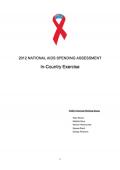
Resource | Publications,
The Fiji Government, via the National HIV Board, is pursuing a robust initiative to capture strategic information regarding the national response to HIV & AIDS vis-à-vis the tracking of financial information from financing sources to actual expenditures.
This report outlines the concerted effort of the NASA Technical Working Group, as part of its workshop from 10th – 12th December 2012, to track expenditure and engage stakeholders in the consistent utilization of the NASA resource tracking system as a vital component in reporting.
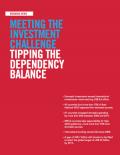
Resource | Publications,
Domestic investments have surpassed global giving in 2011. Low- and middle-income countries invested US$ 8.6 billion in 2011. While countries are tipping the balance, international assistance still remains critical and indispensable in the short and medium term. International assistance from donor government and philanthropies has remained stable at around US$ 8.2 billion in the past few years.
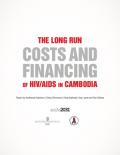
Resource | Publications,
The methodology for carrying out this study has centered on three elements:
- projection of the course of the epidemic under different program scale-up scenarios;
- estimating the resources required for addressing the HIV/AIDS epidemic as it unfolds according to the different scenarios; and,
- assessing how the resources required in the future might be financed.
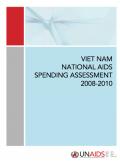
Resource | Publications,
This report is a compiled analysis of two National AIDS Spending Assessments (NASA) conducted in 2010 and 2011 in Viet Nam by a team of consultants hired by UNAIDS Vietnam, with the support from Viet Nam Administration of HIV/AIDS Control. The first NASA captured AIDS expenditure by nearly all national and international funding sources in Viet Nam over the two-year period 2008 to 2009, while the second NASA captured this expenditure for 2010. The two NASA track the resources of health services as well as social-mitigation, education, labour, justice and other sectors to embody the multisectoral response in Viet Nam. Through its findings, the NASA aim to inform and support the development of Viet Nam’s new National Strategy on HIV/AIDS Prevention and Control to 2020, with a vision to 2030.
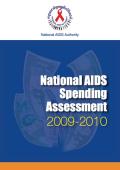
Resource | Publications,
The National AIDS Authority (NAA), as part of its mandate to monitor and evaluate the national response to HIV and AIDS in Cambodia, conducted the third National AIDS Spending Assessment (NASA III) in early 2011. The assessment covered 2009 and 2010, and together with data obtained in the two previous NASA rounds, has allowed for analysis of trends in resource flows from 2006 to 2010. The three assessments have produced valuable data which are used to monitor Cambodia’s National Strategic Plan for Comprehensive and Multi sectoral Response to HIV and AIDS (NSP) and to report on expenditures nationally and globally.

Resource | Publications,
The National HIV and AIDS Spending Assessment (NASA) approach to resource tracking is a systematic methodology used to determine the flow of resources intended to combat HIV and AIDS. The tool tracks actual expenditure (public, private and international) both in health and non-health sectors that comprises the National Response to HIV and AIDS. It represents HIV Response in the monetary values.
The first NASA exercise in Papua New Guinea captures 2009 and 2010 calendar years.
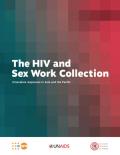
Resource | Reviews and Snapshots,
The HIV and Sex Work Collection provides eleven detailed case studies on HIV and sex work programmes and advocacy from seven countries in the Asia Pacific region: Bangladesh, China, Fiji, India, Myanmar, Nepal and Thailand. It also provides an analysis of the key lessons learned for delivering and scaling up evidence and rights-based responses.
The HIV and Sex Work Collection is designed for multiple audiences. It is a valuable tool for: programming managers, implementers and service providers, including government, NGOs and sex worker organizations, in the design and delivery of programmes; policy makers and development partners in planning and allocating resources for strengthening and scaling up effective interventions; and advocacy for a comprehensive response that focuses on evidence and rights-based interventions to address HIV in the context of sex work.
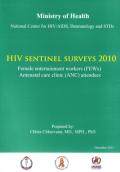
Resource | Publications,
In 2010, the 11th round of HSS has been conducted. The study was conducted among female entertainment workers and pregnant women attending antenatal clinics across 22 provinces/cities in Cambodia. Findings from HSS 2010 suggest that HIV prevalence among female sex workers (represented by female entertainment workers who reported having more than 7 clients per week) remained stable compared to the prevalence of 14% in 2006.However, a clear drop in HIV prevalence was observed when looking at the trend among pregnant women attending antenatal clinic, as there has been about a 0.4% point drop from 2006 to 2010.
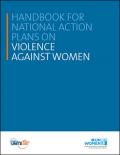
Resource | Publications,
States have clear obligations under international law to address violence against women. States are required to exercise due diligence to prevent acts of violence against women; to investigate such acts and prosecute and punish perpetrators; and to provide redress and relief to victims. The requirement to adopt and implement national action plans to address violence against women is set out in international and regional human rights instruments and policy documents. The adoption and implementation of multi-sectoral national plans of action to address violence against women is one of the five key outcomes which the Secretary-General's campaign "UNiTE to end violence against women" aims to achieve in all countries by 2015.
The Handbook brings together current knowledge on effective policy for the prevention of, and response to, violence against women, and concretely demonstrates how States have developed and implemented such policy in their own contexts. The document is not a model plan itself, but sets out guidelines to help policy makers and advocates formulate effective plans. It is based on good practices in States' plans and the advice of experts from different countries and regions.
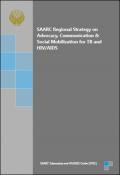
Resource | Publications,
The SAARC Regional Strategy for TB and HIV Co-infection recognizes that TB and HIV/AIDS are two major public health problems in the SAARC Region. Out of the eight countries, four countries- namely Afghanistan, Bangladesh, India and Pakistan are among 22 high TB burden countries, globally. TB is the most common opportunistic infection and the cause of death for those infected with HIV/AIDS. TB adds to the burden of illness of people infected with HIV while HIV accelerates the progress of TB infection to active TB disease, and has implications for the public health.
In this region, the HIV/AIDS prevalence in general population is still low but its prevalence
among high risk groups has increased during the last decade which is a cause of concern.
The role of ACSM is crucial in achieving a world free of TB and HIV/AIDS. The aim of Advocacy, Communication and Social Mobilization (ACSM) is to support National TB and HIV/AIDS Control Programmes of the SAARC Region to combat stigma and discrimination, improve case detection and treatment adherence, empower people affected by TB and HIV/AIDS and to mobilize political commitment and resources for TB and HIV/AIDS. ACSM strategy incorporates various types of communication programming, including mass media, interpersonal communication, community mobilization and advocacy.





